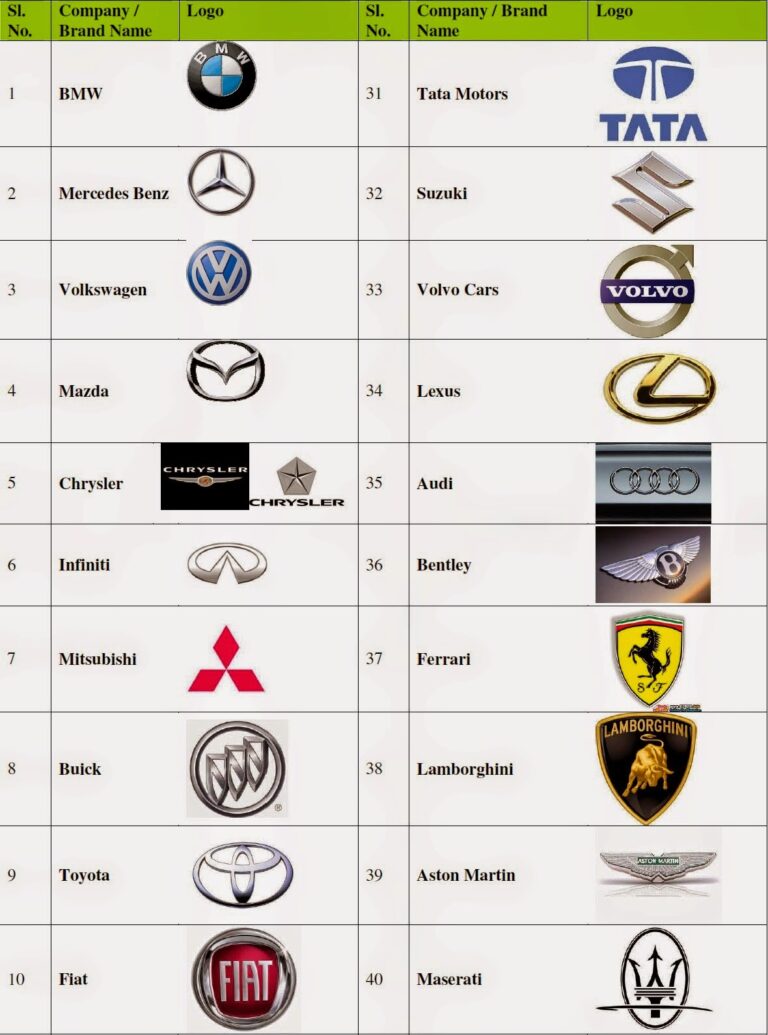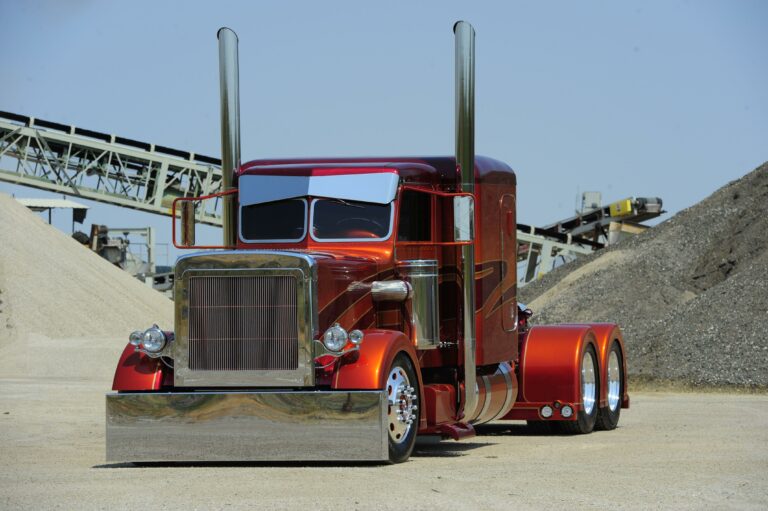Buy Unsold Brand New Cars: Your Guide to Smart Savings
Buy Unsold Brand New Cars: Your Guide to Smart Savings cars.truckstrend.com
In the exciting world of car shopping, the allure of a "brand new" vehicle often comes with a hefty price tag. However, a savvy alternative exists that allows you to experience that coveted new car smell and full factory warranty without paying top dollar: buying unsold brand new cars. Often overlooked, these vehicles represent a golden opportunity for significant savings, offering all the benefits of a fresh-off-the-lot car at a considerably reduced cost.
This comprehensive guide will demystify the concept of unsold brand new cars, also known as "new old stock" or "aged inventory." We’ll explore why they exist, the remarkable advantages they offer, how to effectively hunt them down, crucial considerations before making a purchase, and expert tips for negotiating the best possible deal. If you’re looking to maximize your budget and drive away in a pristine, never-before-owned vehicle, understanding this niche market is your first step towards smart car ownership.
Buy Unsold Brand New Cars: Your Guide to Smart Savings
What Exactly Are Unsold Brand New Cars?
At its core, an unsold brand new car is precisely what the name suggests: a vehicle that has never been registered to a private owner, driven off the dealership lot for good, or titled in anyone’s name. It carries a full factory warranty and is in pristine, "new" condition, identical to a current-year model. The key distinction is that it’s typically from a previous model year, or it’s a current model that has simply been sitting on the dealer’s lot for an extended period, perhaps due to low demand for that specific configuration, color, or trim.
Dealers carry a significant amount of inventory, and not every car sells immediately. Reasons for a vehicle remaining unsold can include:
- End-of-Model-Year Transition: As new model years arrive (typically in late summer or fall), dealers are eager to clear out last year’s stock to make space.
- Unpopular Configurations: Certain color combinations, specific trim levels, or less common features (like a manual transmission in a segment dominated by automatics) might not appeal to a broad audience.
- Overstock: A dealership might have simply ordered too many of a particular model, leading to an excess supply.
- Economic Downturns or Slow Sales: General market conditions can slow down sales across the board, leaving more inventory untouched.
- Regional Preferences: A car popular in one region might be a slow seller in another.

Unlike used cars, demo vehicles (which have been test-driven extensively by multiple customers), or certified pre-owned (CPO) cars (which are used vehicles that have undergone a rigorous inspection and often come with an extended warranty), unsold brand new cars are genuinely new. They haven’t accumulated mileage beyond what’s necessary for transport and dealer prep, and they’ve never been owned.

The Irresistible Benefits of Buying Unsold Inventory
The appeal of an unsold brand new car lies squarely in its value proposition. You get all the perks of a new vehicle without paying the premium. Here’s a breakdown of the compelling benefits:
- Significant Discounts: This is the primary driver. Dealers incur carrying costs (interest on floorplan loans, insurance, lot space) for every car that sits unsold. The longer a car remains on the lot, the more motivated the dealer becomes to sell it, often leading to discounts ranging from 10% to 25% or even more off the original MSRP. They also want to hit sales targets and make room for newer inventory.
- Brand New Condition: You’re the first owner. The car has no prior history, no hidden damage from previous drivers, and that unique "new car smell" is all yours.
- Full Factory Warranty: An unsold brand new car comes with the exact same full manufacturer’s warranty as a current-year model. This typically begins on the date of purchase, not the date the car arrived at the dealership.
- New Car Financing Incentives: Manufacturers and dealers often offer attractive financing rates (low APRs) or cash-back incentives on unsold inventory to help move them. Sometimes, these incentives can be even better than those offered on the very latest models, as they are specifically designed to clear out older stock.
- Immediate Availability: No waiting for factory orders or specific configurations. The car is on the lot, ready for you to drive away.
- Depreciation Advantage: While a new car loses a significant portion of its value the moment it’s driven off the lot, an unsold model has often already absorbed some of that initial depreciation in its discounted price. This means you’re starting from a lower cost basis, potentially mitigating some of the steepest value loss that a full-MSRP purchase would incur.

How to Find Unsold Brand New Cars
Finding these hidden gems requires a strategic approach. They aren’t always prominently advertised as "unsold."
- Target End-of-Model-Year: The best time to look is typically in late summer, fall, or early winter, when dealerships are trying to clear out the current year’s models to make way for the upcoming year’s inventory.
- Search Dealer Websites: Look for sections like "Specials," "Clearance," "Last Year’s Models," "Previous Year Inventory," or "Manager’s Specials." Be specific in your searches; sometimes filtering by model year can reveal these opportunities.
- Use Online Car Marketplaces: Websites like Autotrader, Cars.com, Edmunds, or local dealer aggregators allow you to filter by "new" condition and specific model years. You can often spot unsold cars by their significantly lower prices compared to current-year equivalents.
- Visit Dealerships In Person: Don’t be afraid to walk onto a lot and directly ask a sales manager about "aged inventory," "leftover models," or "previous model year cars." Be polite but firm about your interest in a discounted new vehicle.
- Expand Your Search Radius: If you’re flexible on color or specific features, widening your geographical search to dealerships in neighboring towns or even states can yield better results, as inventory and demand vary regionally.
- Leverage Sales Events: Keep an eye out for year-end sales, holiday promotions (e.g., Black Friday, President’s Day), or "clearance" events that are specifically designed to move older inventory.
Key Considerations Before You Buy
While the savings are attractive, it’s essential to approach buying an unsold car with a clear understanding of what you’re getting.
- Model Year Difference: While "new," it’s technically an older model year. This can slightly impact its resale value down the line compared to a car purchased in its actual model year. However, the initial savings often outweigh this minor depreciation difference.
- Feature Parity: Ensure the features and technology in the unsold model year meet your needs. New models often introduce subtle updates, infotainment improvements, or new safety features. Research the differences between the unsold model year and the current one.
- Warranty Start Date: Confirm with the dealer that the full factory warranty will commence on your purchase date, not the date the car arrived at the dealership. This is standard practice but always worth verifying.
- Potential for Minor Wear: A car sitting on a lot for months might accumulate dust, have a slightly discharged battery, or show minor cosmetic imperfections from being moved around. Thoroughly inspect the vehicle, inside and out, including tires and under the hood.
- Availability of Specific Trims/Colors: Your choices will be limited. You might not find your exact preferred color or a specific trim package. Flexibility is key.
- Financing Rates: While often good, compare the offered financing rates for the unsold model with current rates on new cars. Sometimes, current-year incentives might surprisingly beat those on older stock, especially if the dealer is less motivated.
- Insurance Costs: Generally, insurance costs for an unsold new car will be similar to those for a current-year new car, as both are valued similarly by insurers at the time of purchase.
Negotiating Your Best Deal
The art of negotiation is paramount when buying an unsold car. Dealers are motivated to sell, and you have leverage.
- Know the Market Value: Research what similar new cars (of that model year) are selling for. Use online tools to get a sense of the dealer’s invoice price and what others have paid.
- Understand Dealer Motivation: Recognize that the dealer is losing money every day this car sits. They want to free up capital and lot space. Use this to your advantage.
- Focus on the Out-the-Door Price: Don’t just negotiate the sticker price. Insist on discussing the total "out-the-door" price, which includes all taxes, fees (documentation, destination, registration), and the purchase price. This prevents hidden fees from eroding your savings.
- Be Patient and Firm: Don’t rush. If you feel pressured, be prepared to walk away. There’s often another similar deal to be found.
- Leverage Multiple Dealers: If possible, get quotes from several dealerships for similar unsold models. Use competing offers to drive down the price.
- Ask About Hidden Incentives: Inquire about "dealer cash" or "holdbacks"—incentives manufacturers offer directly to dealers to move specific models. While dealers aren’t obligated to pass these on, knowing about them gives you leverage.
- Don’t Rush the Inspection: Once a price is agreed upon, take your time inspecting the vehicle thoroughly before signing anything. Any minor issues should be addressed by the dealer or result in a further discount.
Potential Challenges and Solutions
While advantageous, buying unsold cars isn’t without its minor hurdles.
- Limited Selection:
- Solution: Be flexible with color, trim, and minor features. Expand your search radius to multiple dealerships.
- Outdated Technology:
- Solution: Assess if the technology gap truly impacts your daily needs. Often, the core functionality remains strong. For some features (like navigation), smartphone integration might suffice.
- Slightly Lower Resale Value:
- Solution: Accept this as part of the initial savings. If you plan to keep the car for many years, the long-term impact is minimal. The initial discount often outweighs the accelerated depreciation.
- Dealer Resistance to Deep Discounts:
- Solution: Come prepared with research. Be polite but firm. Highlight their carrying costs. Be willing to walk away if the deal isn’t right for you.
- Minor Cosmetic Issues from Sitting:
- Solution: Conduct a thorough pre-purchase inspection. Note any scratches, dings, or faded plastics. Negotiate for these to be fixed or for an additional discount.
Understanding Potential Savings: A Conceptual Table
It’s impossible to provide exact prices for unsold cars as they vary wildly by make, model, location, and how long they’ve been on the lot. However, the table below illustrates the factors that contribute to potential savings and typical discount ranges.
| Factor / Category | Description | Potential Impact on Price / Savings |
|---|---|---|
| Model Year Difference | Buying a previous model year (e.g., 2023 in 2024) | Highest Discounts: Typically 10-25% off MSRP, sometimes more. |
| Time on Lot (Aging) | How long the specific vehicle has been unsold at the dealership. | Increased Motivation: Longer time = greater dealer motivation for discount. |
| Popularity/Demand | Less popular colors, trims, engine options, or overall vehicle models. | Higher Discounts: Dealers push these harder to clear space. |
| Manufacturer Incentives | Direct cash-back or low APR offers from the car manufacturer. | Direct Savings: Can significantly reduce the final price or financing cost. |
| Dealer Incentives/Holdbacks | Funds or bonuses paid by the manufacturer to the dealer for selling specific cars. | Negotiation Leverage: Can be passed on to the buyer for a better deal. |
| Negotiation Skill | Your ability to research, compare, and negotiate effectively. | Additional Savings: Can add an extra 1-5% off the initial discounted price. |
| Market Conditions | Overall economic climate, interest rates, and local car market saturation. | Better Bargains: In a slower market, dealers are more eager to sell. |
Frequently Asked Questions (FAQ)
Q: Is an unsold car truly "brand new" even if it’s a previous model year?
A: Yes. It has never been registered, titled, or owned by a private individual. It has only accumulated mileage from factory testing and transport.
Q: Does the warranty start from the date of purchase or the date the car arrived at the dealership?
A: Typically, the full factory warranty begins on the date of your purchase, as you are the first retail owner. Always confirm this with the dealer.
Q: Will an unsold car have the latest features and technology?
A: No, it will have the features and technology that were standard or optional for its specific model year. New models often introduce minor updates, so research the differences if cutting-edge tech is crucial for you.
Q: How much can I realistically save by buying an unsold car?
A: Savings vary, but it’s common to see discounts ranging from 10% to 25% off the original MSRP. In some cases, with strong negotiation and expiring incentives, savings can be even greater.
Q: Will buying an older model year impact my insurance costs?
A: Generally, no. Insurance companies assess the car’s value at the time of purchase. Since it’s a new car, it will be insured as such, similar to a current-year model.
Q: How does depreciation work with an unsold car?
A: The initial, steepest depreciation often "happens" to the dealer as the car sits and ages. You buy it at an already discounted price, which mitigates some of that immediate value loss. However, its resale value down the line might be slightly lower than a car purchased in its actual model year, simply because it’s technically an older model year.
Q: Are financing options available for unsold brand new cars?
A: Yes, absolutely. These cars are often eligible for the same (or sometimes even better) new car financing incentives, including low APRs and cash back offers, as manufacturers and dealers want to move them off the lot.
Conclusion
Buying an unsold brand new car is an incredibly smart and often overlooked strategy for acquiring a pristine vehicle at a significantly reduced price. It offers the best of both worlds: the reliability, warranty, and experience of a brand new car, combined with the financial advantage typically associated with a pre-owned vehicle.
By understanding what these cars are, knowing where to find them, and approaching the negotiation process with confidence and solid research, you can unlock substantial savings. While a degree of flexibility regarding color or specific features might be necessary, the financial benefits often far outweigh these minor compromises. So, if you’re in the market for a new car, remember to look beyond the latest models and explore the untapped potential of unsold inventory. Your perfect, brand new, budget-friendly ride might just be waiting for you on a dealership lot.





